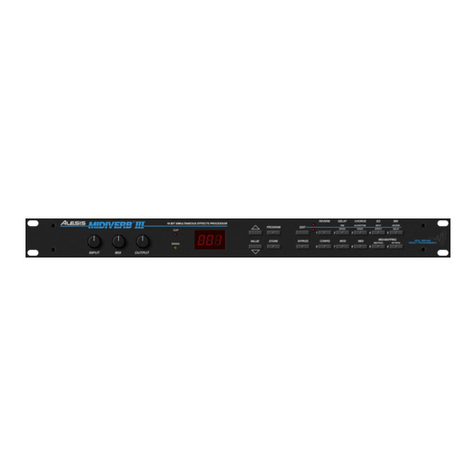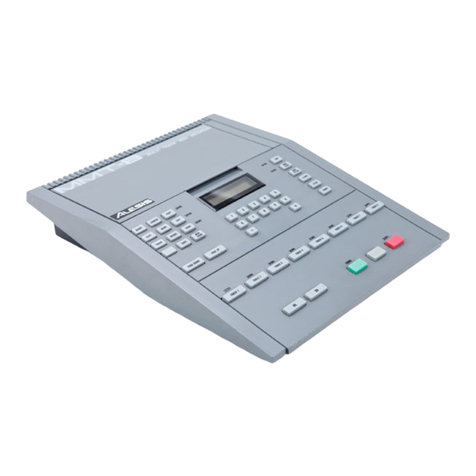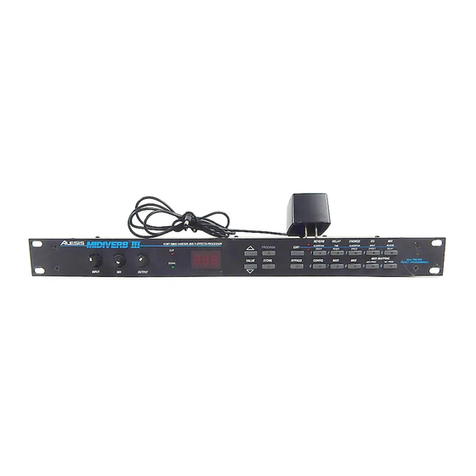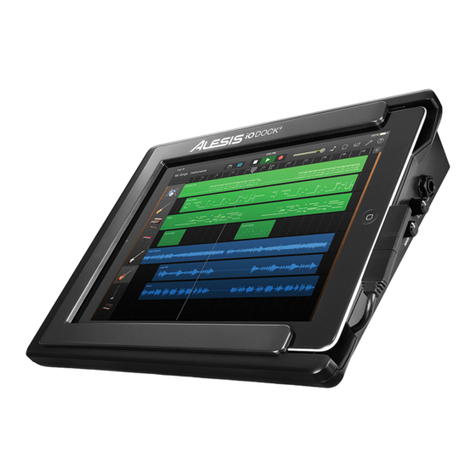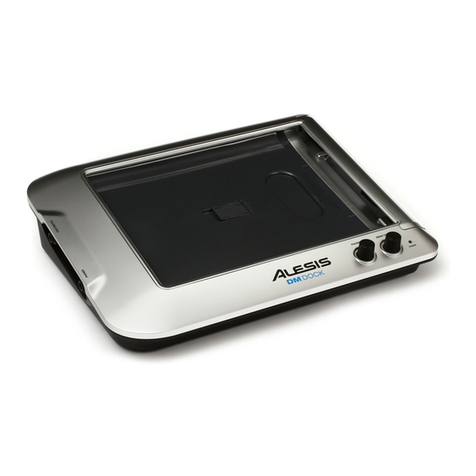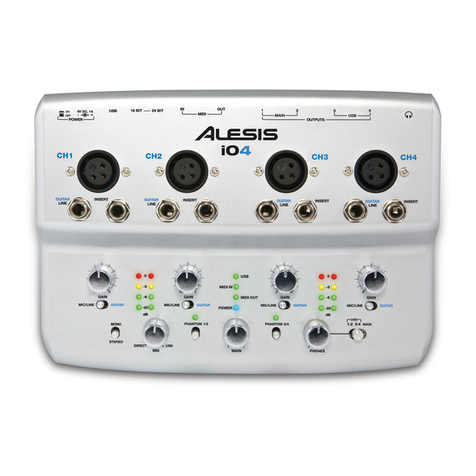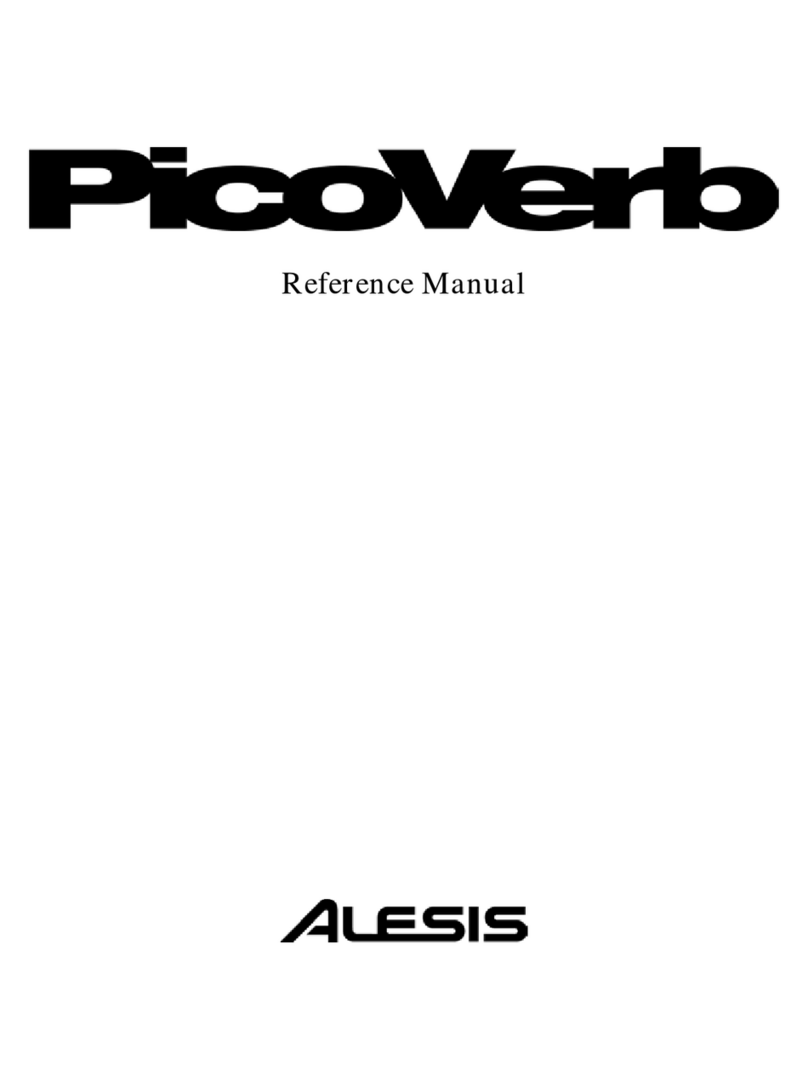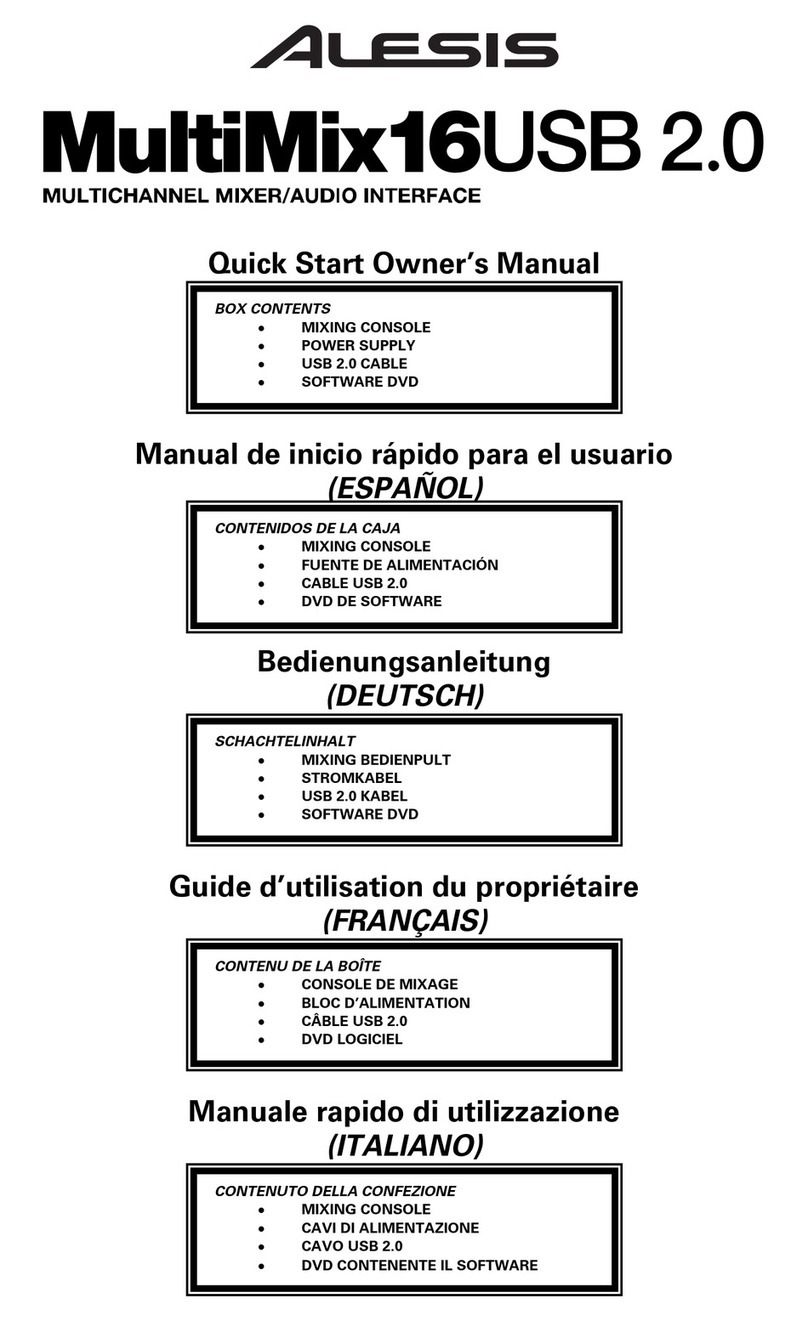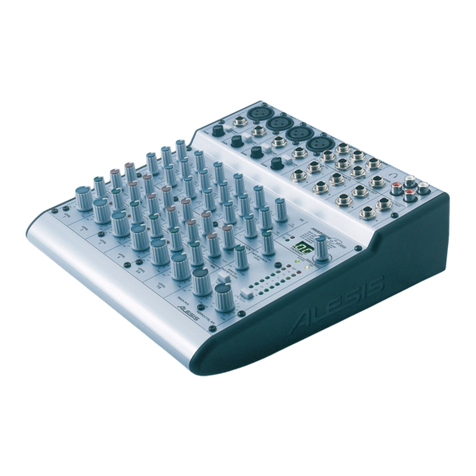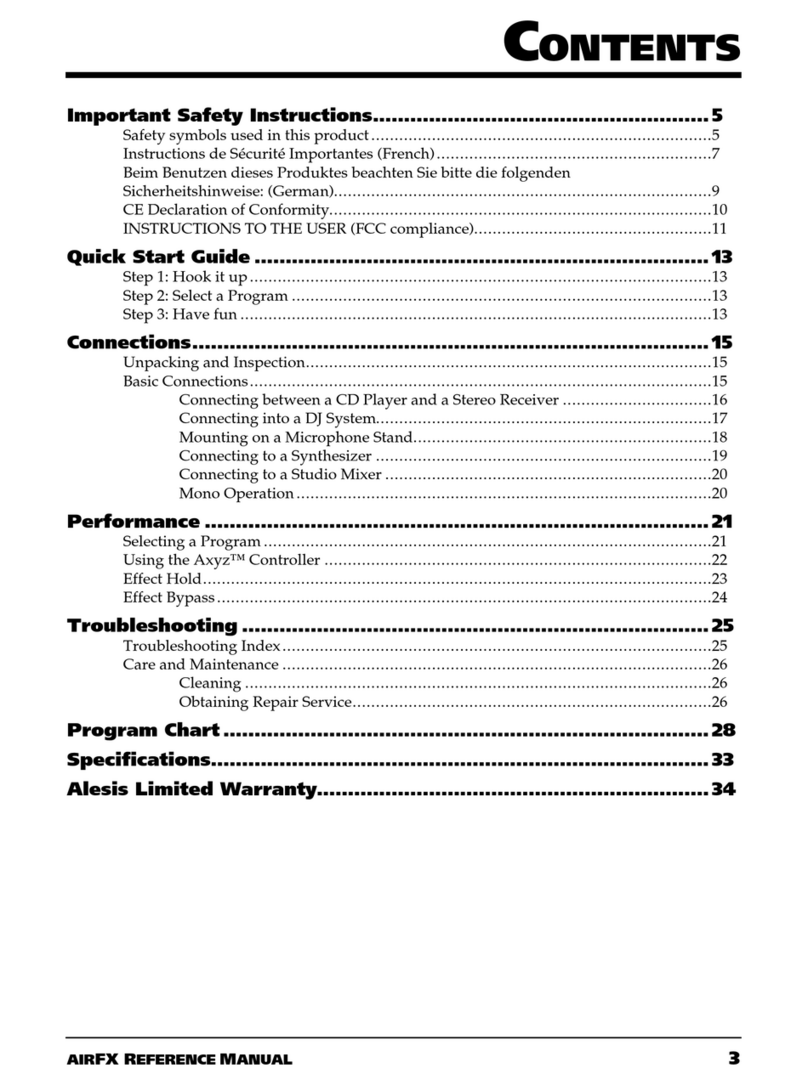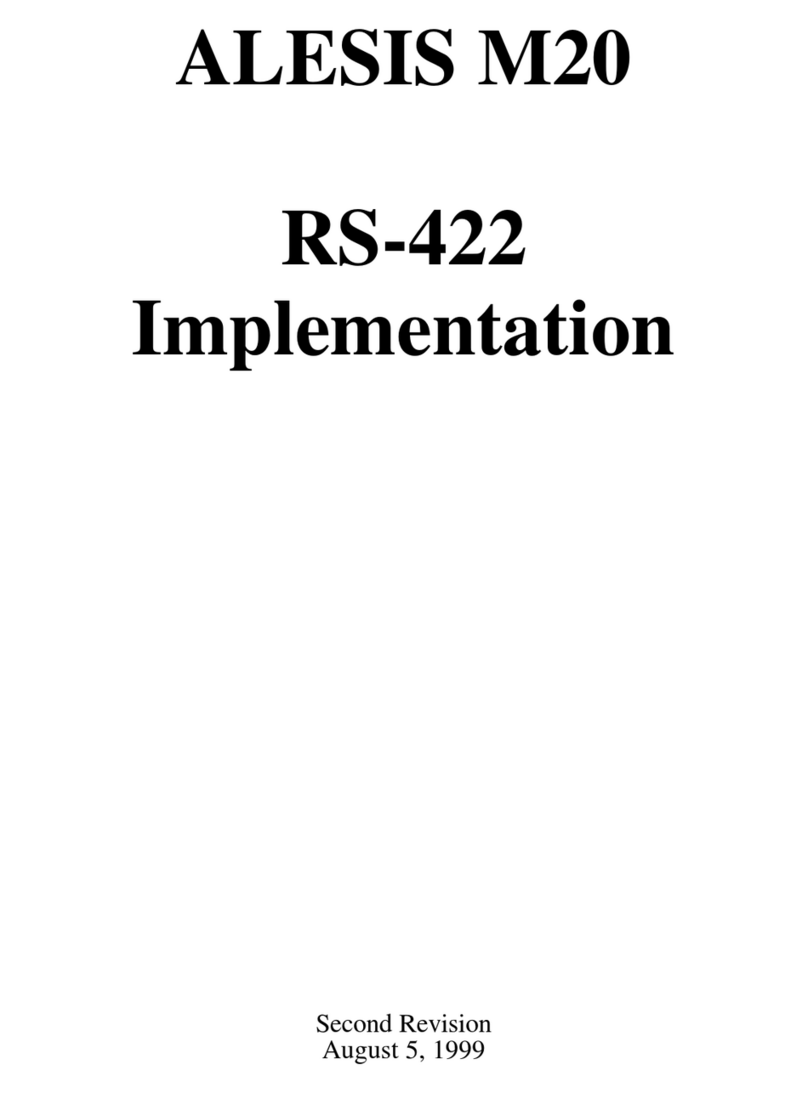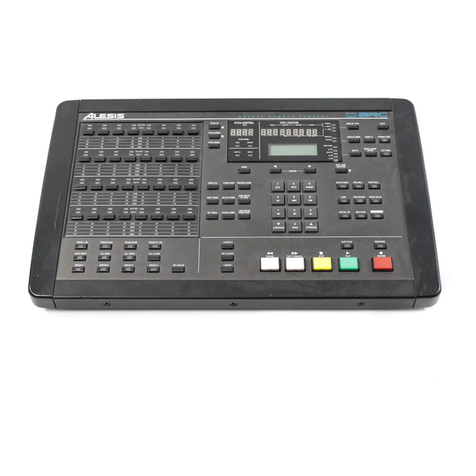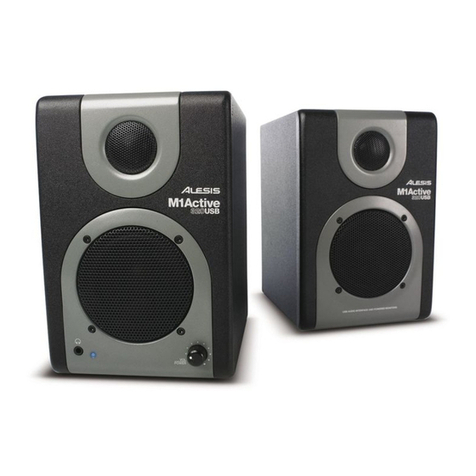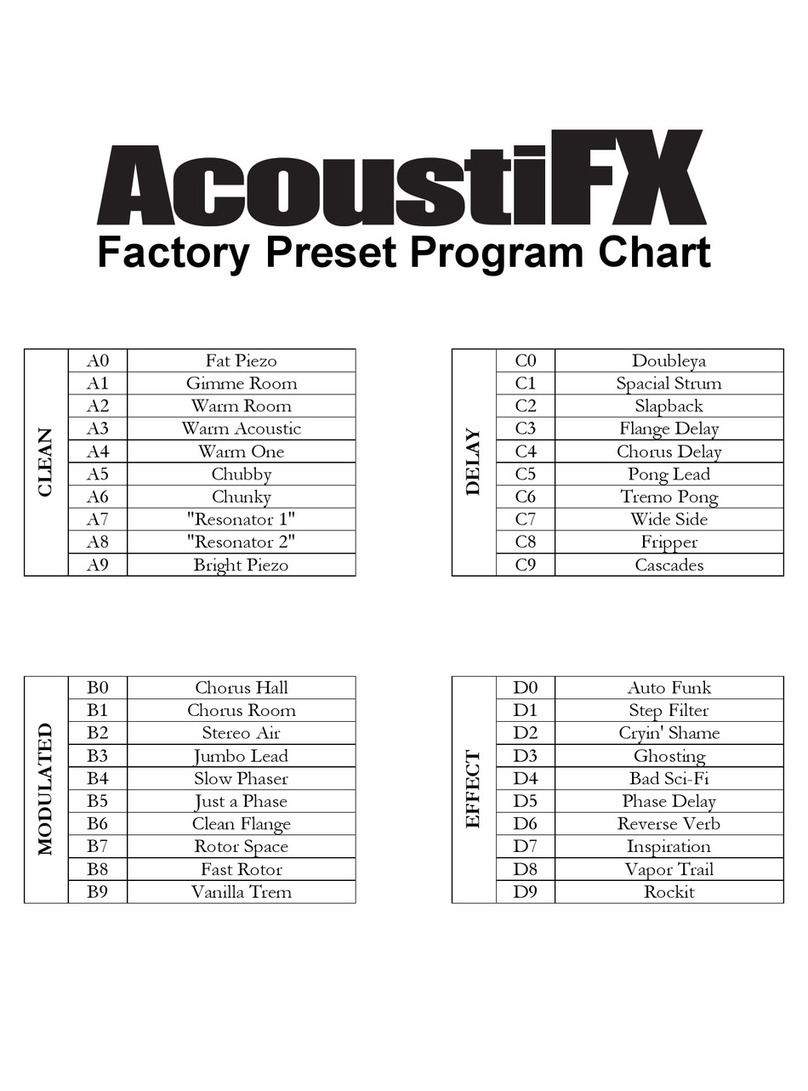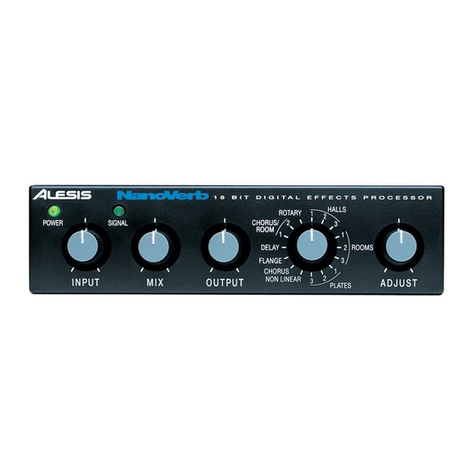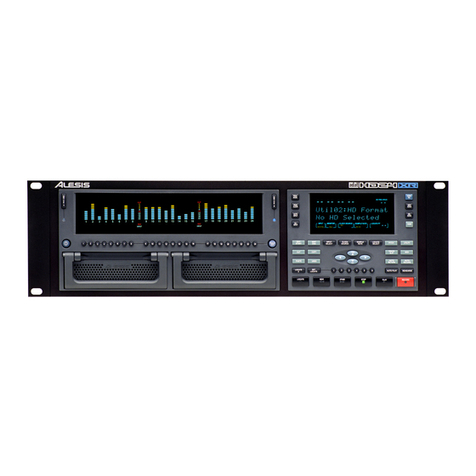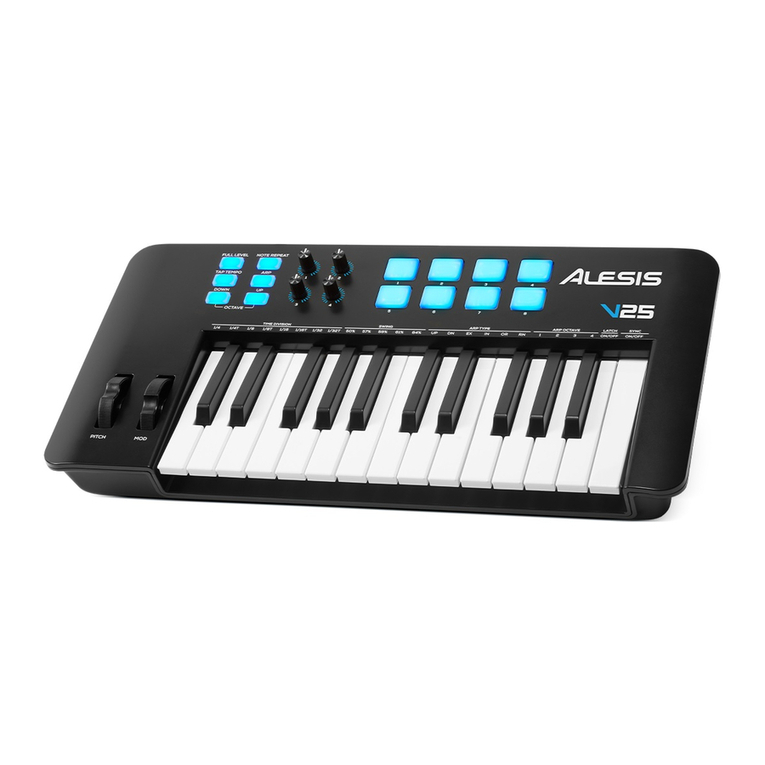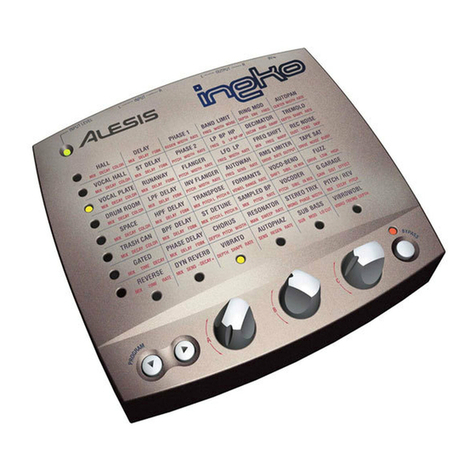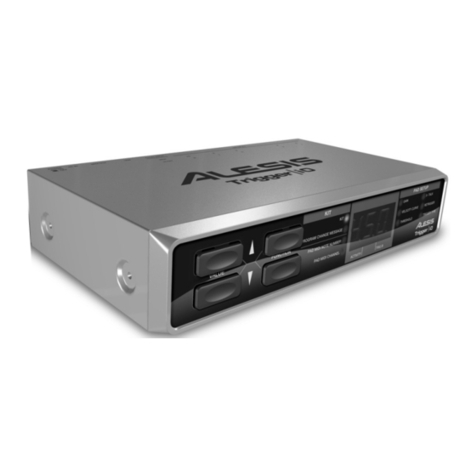1
1.1 INTRODUCTION
Thank you for purchasing the Alesis 3630 Dual Channel Compressor/
Limiter with Gate. This cost-effective gain control device complements
any studio with several important features. For more information on the
significance of these features, refer to the Appendix "About Compression
and Limiting."
• Stereo or dual mono operation. The 3630 can serve as two totally in-
dependent units, or both sections can be strapped together for stereo
operation. In stereo, gain changes in one section are "tracked" by the
other section to eliminate wandering of the stereo image.
• Peak or RMS response. Determines whether the limiter will base its
operation on signal peaks or average signal levels. Each has its uses with
different types of signals (for example, peak with drums, and average
with complex program material).
• "Hard knee" or "soft knee" response. Each type of response gives a
different limiting action. The hard knee response is generally considered
more "severe," and the soft knee response, more "musical."
• Individual bypass switches for each channel. This makes it easy to
compare the processed and unprocessed sounds.
• Side chain connections. Insert EQs and other devices for applications
such as de-essing (removing sibilance), adding treble to limited signals,
"keying" one signal with another, "ducking" (e.g., making a signal such as
background music become lower in volume in response to another
signal, such as narration), and other applications.
• +4 dBu or -10dBV operation. This provides signal level compatibility
with nearly all studio setups.
• Front panel knob calibrations. Knobs are calibrated to allow for easy
setup and operation.
• Built-in stereo/dual mono noise gate. This can reduce noise when
compressing or limiting. Each section can also operate as a stand-alone
noise gate.
• Extensive metering. Each channel has a 12-LED display to indicate the
amount of gain reduction, a second 12-LED display to show input/
output levels, and a dual-LED display to indicate noise gate status.
Here are some typical applications for the 3630:
• Even out a vocalist's dynamics to compensate for poor mic or vocal
technique.
• Increase a guitar's (or other stringed instrument's) sustain.
2
• Smooth out bass sounds for a more consistent level.
• Prevent peaks common in many source signals, such as drums, from
overloading tape during recording.
• Minimize the chance of speaker burnout by inserting a limiter prior to
the power amp.
• Decrease a signal's dynamic range to accommodate a recording medium
with a more limited dynamic range (e.g., process a master tape mixed
for CD duplication when making cassette copies to accommodate the
cassette's limited dynamic range).
• In PA applications, limiting can increase a vocalist's level before
feedback occurs.
• Reduce sharp signal peaks associated with some signal processors and
highly resonant synthesizer patches.
• Remove hiss from tape, guitar amps, etc. with the noise gates.
• Use the noise gate to "key" one instrument's rhythm to another in-
strument.
• Use the sidechain to remove excessive sibilance from vocals and nar-
ration (commonly known as "de-essing").
• Use the sidechain for lowering background music or other program
material in the prescence of narration (commonly known as ducking).
1.2 HOOKUP: GENERAL TIPS
Rear Panel Connections
Each channel has its own set of rear panel 1/4" phone jacks.
Input Plug in the output of low or line level signals to be limited,
compressed, or gated. These outputs can be a stereo pair or individual
mono outputs from mixing consoles, crossovers, tape recorder channels,
synthesizers, and other unbalanced signal sources.
Microphones and guitars can be used with the level switch set to -10dBV
(see below). Guitars with exceptionally low output pickups may require a
preamp for best results. The input impedance is greater than 100kΩ.
